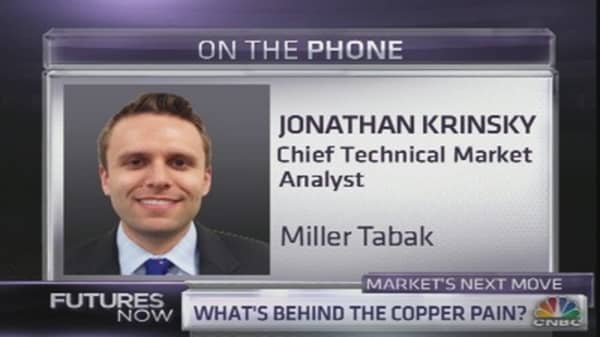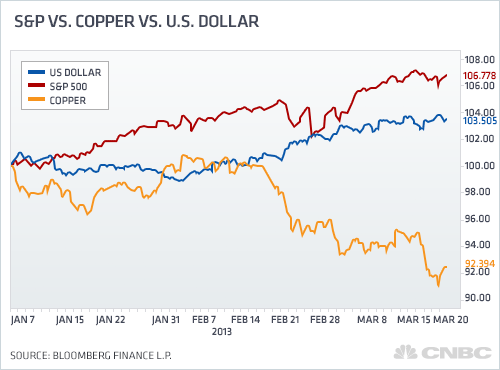Over the past month and a half, many people have made a big stink about copper's divergence from the S&P 500, and Jonathan Krinsky has been among them. In a Feb. 19 note, Miller Tabak's chief technical analyst wrote that a copper breakdown could lead to lower stock prices.
Now he's changed his tune. On Tuesday's episode of "Futures Now," Krinsky said, "The initial breakdown in copper is not necessarily a bearish indicator, if we are getting a structural change where a positive dollar is positive for stocks."
In other words, the negative correlation between stocks and copper can actually be explained by a third factor: the U.S. dollar. Since stocks and copper both tend to move inversely to the dollar, a rise in the currency tends to mean a drop in both copper and stocks. However, while copper's negative relationship to the dollar has held, we have recently seen stocks and the dollar become positively correlated.
You can see it on this chart:















